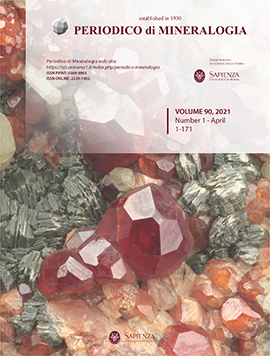United We Stand: Handmade Pottery Production at Cap de Barbaria II (Formentera, Spain) During the Bronze Age
DOI:
https://doi.org/10.13133/2239-1002/17145Keywords:
handmade pottery, technological choices, petrology, XRPD, archaeometryAbstract
In this article, we describe petrological, mineralogical and typological analyses of handmade pottery recovered from the Bronze Age site of Cap de Barbaria II, which is located on the island of Formentera (Balearic Islands, Spain). In addition, the mineralogy and texture of several clay deposits present within the study area are also characterized using X-ray powder diffraction and laser diffraction particle size analysis. The goals of this research are, first, to identify the different technological choices made by the community of potters that inhabited this settlement in various stages of the chaîne opératoire (i.e., the procurement of raw materials, preparation of pastes, shaping of the vessels, and firing); second, we aim to determine the relationships between the technological choices identified at this site and the prehistoric technological traditions observed on the other islands of the Balearic archipelago. The results provide evidence that the Bronze Age potters from Cap de Barbaria II developed a very cohesive production system for the procurement of raw materials and the paste recipes used to produce the vessels. Moreover, the results indicate a clear preference for the long-term use of decalcified clays and spathic calcite temper, thus reflecting a consistent community of practice among the potters that shared several technological choices with artisans located at other sites on Formentera and other islands within the archipelago.Downloads
Published
2020-10-19
Issue
Section
ARCHAEOMETRY and CULTURAL HERITAGE


